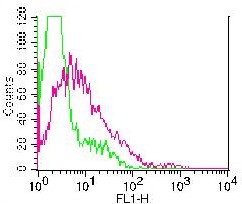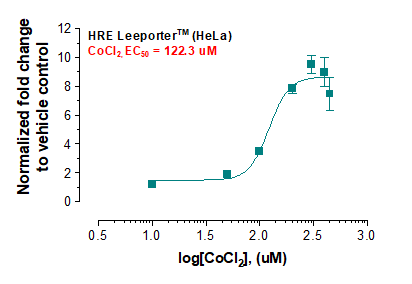Recombinant Human CXCR7 Protein, hFc Tag
Shipping Info:
For estimated delivery dates, please contact us at [email protected]
| Amount : | 50 µg |
| Content : | Lyophilized from sterile PBS, pH 7.4. Normally 5 % - 8% trehalose is added as protectants before lyophilization. |
| Storage condition : | Store at -20°C to -80°C for 12 months in lyophilized form. After reconstitution, if not intended for use within a month, aliquot and store at -80°C (Avoid repeated freezing and thawing). Lyophilized proteins are shipped at ambient temperature. |
| Uniprot ID : | P25106 |
| Alternative Name : | Atypical chemokine receptor 3,CXC-R7,CXCR-7,Chemokine orphan receptor 1,G-protein coupled receptor 159,RDC-1 |
Molecular Characterization: CXCR7(Met1-Lys40) hFc(Glu99-Ala330)
Molecular weight: The protein has a predicted molecular mass of 31.0 kDa after removal of the signal peptide. The apparent molecular mass of CXCR7-hFc is approximately 35-55 kDa due to glycosylation.
Description: Recombinant human CXCR7 protein with C-terminal human Fc tag
This gene encodes a member of the G-protein coupled receptor family. Although this protein was earlier thought to be a receptor for vasoactive intestinal peptide (VIP), it is now considered to be an orphan receptor, in that its endogenous ligand has not been identified. The protein is also a coreceptor for human immunodeficiency viruses (HIV). Translocations involving this gene and HMGA2 on chromosome 12 have been observed in lipomas.
Molecular weight: The protein has a predicted molecular mass of 31.0 kDa after removal of the signal peptide. The apparent molecular mass of CXCR7-hFc is approximately 35-55 kDa due to glycosylation.
Description: Recombinant human CXCR7 protein with C-terminal human Fc tag
This gene encodes a member of the G-protein coupled receptor family. Although this protein was earlier thought to be a receptor for vasoactive intestinal peptide (VIP), it is now considered to be an orphan receptor, in that its endogenous ligand has not been identified. The protein is also a coreceptor for human immunodeficiency viruses (HIV). Translocations involving this gene and HMGA2 on chromosome 12 have been observed in lipomas.
|
There are currently no product reviews
|




















.png)











